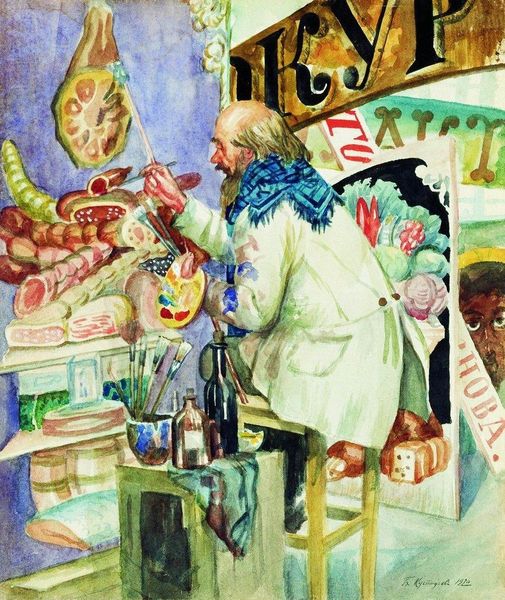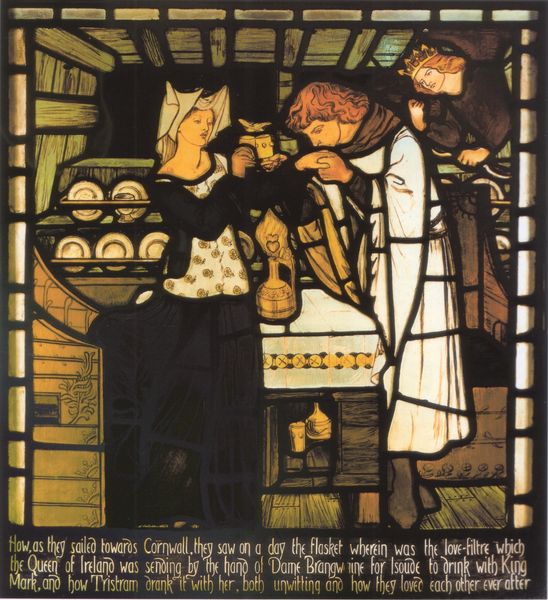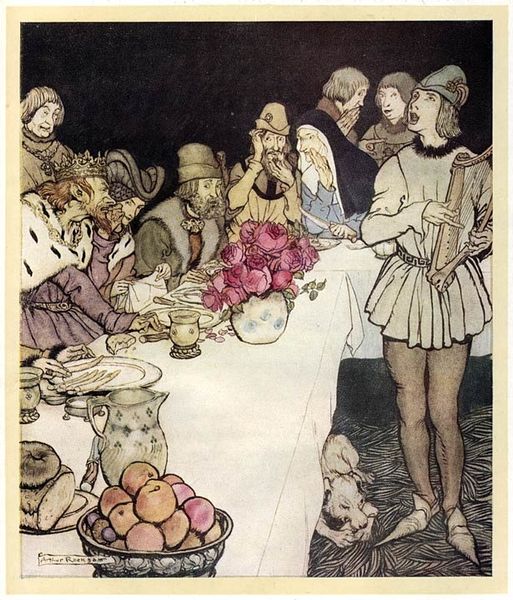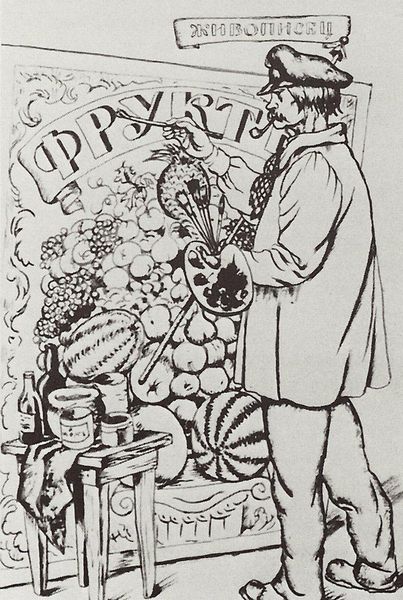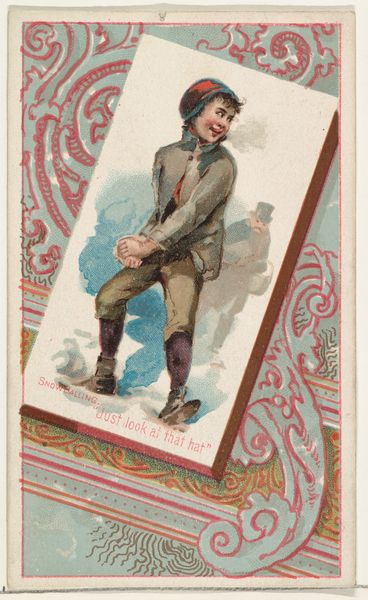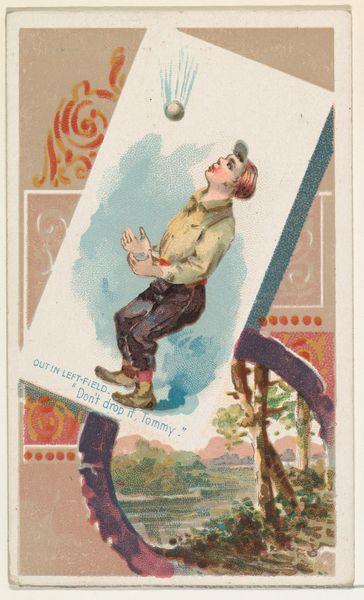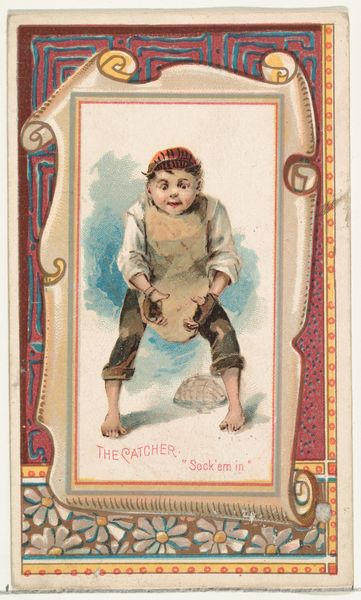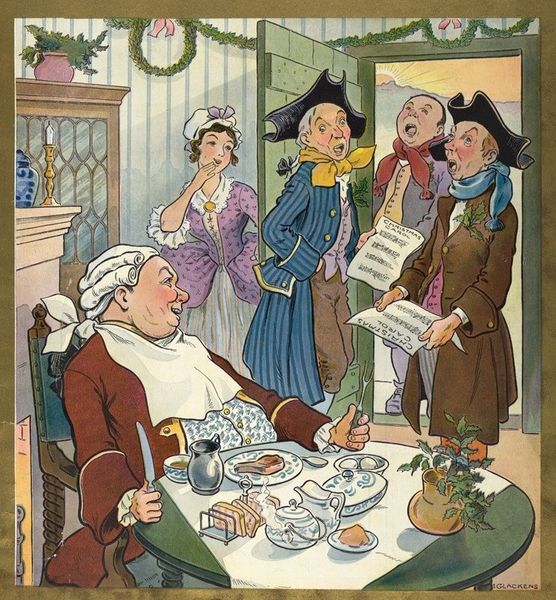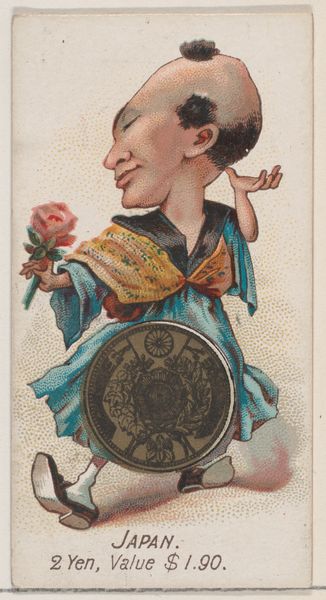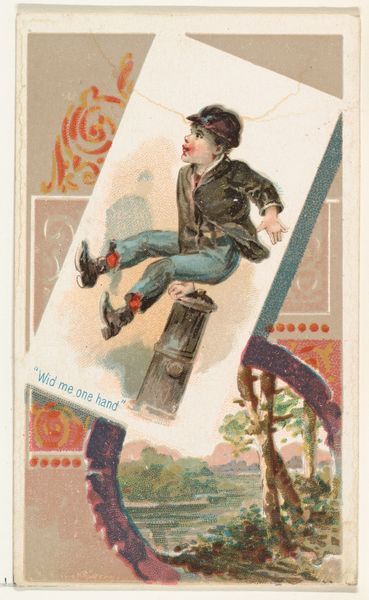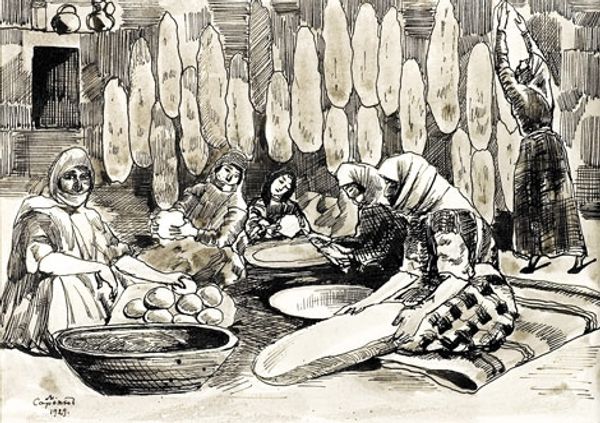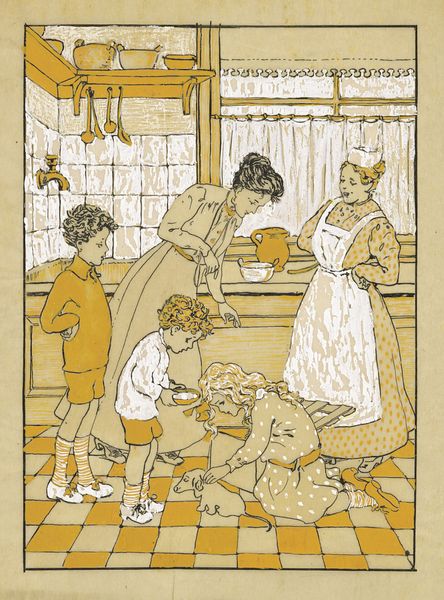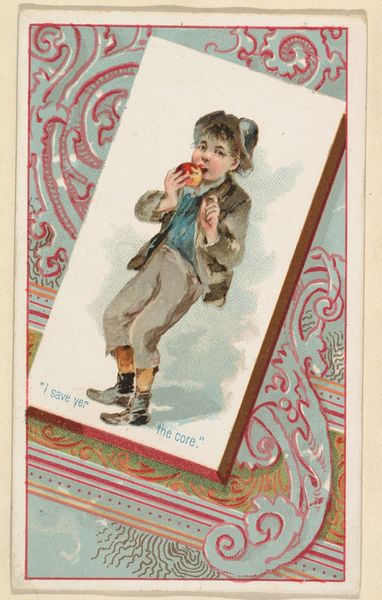
Copyright: Public domain
Editor: Here we have Boris Kustodiev's "Steward," painted in 1919, using oil paints. The steward's sly grin gives me the impression of someone enjoying a secret. How do you interpret this work? Curator: I see this piece as a potent commentary on social stratification during a turbulent time. Painted in 1919, just after the Russian Revolution, it compels us to consider the position of the merchant class. How complicit was the steward in the system that preceded the revolution? What kind of future does he anticipate? Editor: So, his almost caricatured appearance and the abundance around him, they're not just incidental? Curator: Not at all. The overflowing goods – fruits, sugar, and various sundries – highlight the stark contrast between the merchants and the working class during this revolutionary period. Kustodiev’s choice to depict the steward with such visible glee raises important questions about power, privilege, and complicity. What do you make of the framing? The image exists inside an ornamented oval; what does it remind you of? Editor: It is reminiscent of a mirror in the shop... Is that intentional? Curator: Exactly. Mirrors reflect not only a literal image but also the societal values and imbalances that Kustodiev seems to be interrogating here. The steward, surrounded by his wares, becomes a symbol of a bygone era, and maybe, a premonition of things to come. Editor: I never would have considered the revolutionary context and its relation to the subject. This really does provide a new and profound lens through which to view the painting. Curator: Precisely. Examining the socio-political underpinnings of art enables a more holistic, engaged, and nuanced comprehension.
Comments
No comments
Be the first to comment and join the conversation on the ultimate creative platform.
